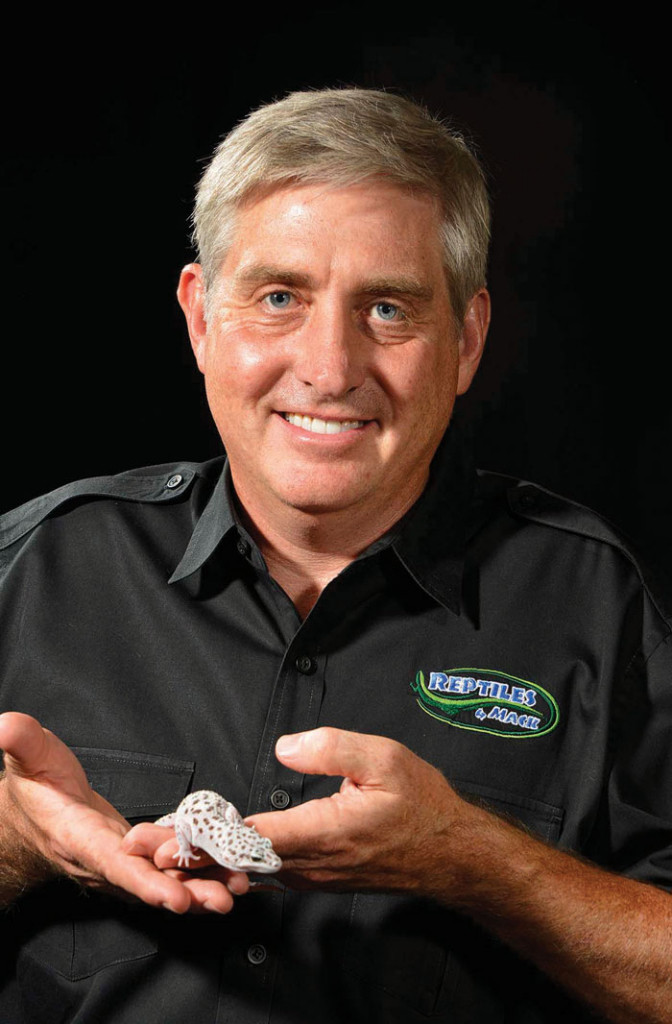Captive or Wild?
John Mack //February 9, 2017//
We throw around the terms “captive bred” and “wild-caught” on a regular basis, though we’ve not defined what these terms and categories actually mean. It’s time to elaborate on these two terms and how they impact your store.
Captive-bred animals are those that are bred by a reptile wholesaler. These animals have never known a wild habitat; their entire lives, from hatching to sale date, has been in an enclosed environment. Captive breeders range in size from the local hobbyist up to internationally-noted companies. Many of the “staples” of reptile sales are captive-bred animals: lizards, pythons, colubrids and geckos are typically captive-bred.
Captive breeding has several advantages that should not be overlooked. The genetic make-up of captive-bred animals are often precisely tracked, resulting in unique morphs, colorations and tempered expectations, should that animal be bred in the future. Captive-bred animals also appeal to retailers due to their availability and pricing.
Captive-bred animals have a minimal impact on the local environment. Since they have never known any outside existence, these animals are effectively outside of the local ecosystem.
Meanwhile, wild-caught animals are precisely that: animals that are captured from their natural habitats and then sold within the pet trade. Certain animals, such as Russian tortoises or most iguanas, are difficult to breed in captivity, so catching these species in the wild becomes the viable option.
Several animal rights groups have raised concerns about wild-caught reptiles, stating that over-catching these animals provides a detrimental effect upon their local ecosystems. And when performed irresponsibly, this can be the case, just as with overfishing of certain ocean areas or excess hunting. However, done in a responsible manner, wild-catching reptiles can leave little to no environmental footprint upon the local ecosystem. In fact, in certain areas, wild-catching programs can give communities a reason to protect various species that would otherwise go unprotected, or even be thought of as vermin. Additionally, many wild caught species are carefully monitored by CITES, a worldwide association that governs how these species are removed from the wild.
One major difference to consider when deciding between wild-caught and captive-bred reptiles is the temperament of those animals. Captive-bred animals, as they have been raised with significant exposure to humans, are often more docile. Wild-caught reptiles, in contrast, can sometimes show more aggression or unfriendliness. However, this varies from species to species and even animal to animal. Russian tortoises, for instance, are known to be particularly friendly, even though they are almost exclusively wild-caught.
Also of note is the relative health of these animals. Because they grow up in the natural environment, wild-caught reptiles are often more likely to carry common parasites and have exposure-related diseases or other maladies. Reputable reptile importers have their own veterinarians examine their animals before shipping, but be diligent. Have your own staff perform health checks and thorough inspections on newly-purchased animals before the animals go on sale. The onus of an animal’s health lies upon you.
It is a fallacy to think that a store should choose either wild-caught or captive-bred reptiles. Rather, as an individual store owner, you need to consider which animals work best within your sales market. Likely, you’ll choose a combination of both, which is perfectly fine.
However, do the necessary research before stocking a given animal: find out what that species requires to support it, what food it eats and what elements are necessary to give the pet a proper home. If you’re unfamiliar with a given animal, talk to your suppliers. Maintaining a good relationship with reptile wholesalers can ensure that the animals you receive are the best possible pets for your store and your customers.



















